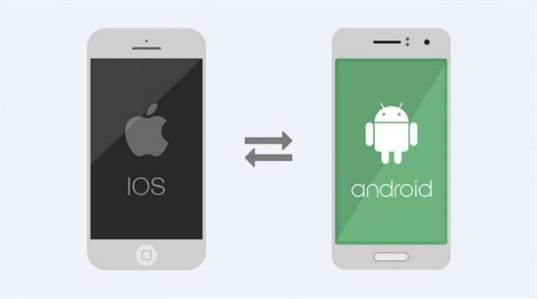Virtual Reality Programming Languages Virtual Reality Society
Virtual reality and VR headsets can be categorised into 2 types – a stationary virtual world and room-scale experiences. Among these, stationary VR development is the most common among all virtual reality applications, comprising affordable VR headsets. Several surveys have confirmed that if you want to work in the gaming industry, then the two top programming languages for VR applications are C# and C/C++. JavaScript also incorporates similar lexical syntax as the more advanced C programming language. It also ranks as one of the top languages in vr programming because it is very comprehensive. UnityScript, also known as JavaScript for Unity, is a programming language used in conjunction with the Unity game engine.
VR applications have become a subset of these web experiences, and many libraries surfaced to help developers work on the platform. C++ has a long-standing recognition in the programming community as being a very performant and efficient language. It has been a staple for developing demanding 3D applications, especially videogames, for a long time, and it’s not going away anytime soon. Unknown to majority of people, Small Talk is an object-oriented, dynamically typed reflective programming language.
Top 10 Virtual Reality Coding Languages
A few years later, A-Frame was developed on top of Three.js by providing an Entity Component System framework and was specifically made to build VR solutions. Besides that, Unity offers many tutorials and examples on how to code a VR experience. Anything that Unity can’t provide in terms of learning can be easily addressed by tapping into its large community.
- Here’s a tip – learning to use accelerometer and gyro sensors, along with speech recognition and image processing, will prove beneficial while curating the entire project.
- Aside from this, it has a JAVA 3D API which enables VR applications to generate 3D images, track the position and orientation of user’s body creating an astonishing user experience.
- With this, it will be more manageable to code in VR, provided you have a high-end VR headset instead of a high-resolution screen.
- During my free time, I like to immerse myself in the world of virtual and augmented reality, which I believe will be more and more prominent in the years to come.
- Some developers also use WebVR, while innovative companies believe a more immersive, 3D internet experience will be developed soon.
Swift’s modern approach to programming makes it a strong contender in the VR programming landscape. CUDA-C is a programming language used by game developers to create desktop games with realistic visuals and depth. In VR programming, CUDA-C cores help create lifelike experiences by presenting high-resolution visuals and a profound 3D impression.
Key Features of CSS3 in VR Programming
VR technology is now used in various fields, including entertainment, healthcare, education, and even military training. While this may sound enticing, and you are probably rubbing your hands in glee, it has a few drawbacks, including the inability to move the head. You can still look around while seated, but VR developers create gameplay elements with basic functionality that you can experience with a simple controller. When you feel stuck or have trouble understanding a concept, sometimes the best thing is to walk away and come back the next day.

By familiarizing themselves with the top programming languages used in VR development, developers can create immersive, engaging experiences that cater to the ever-growing VR market. Programming languages for VR face some challenges and limitations that can affect the quality and interactivity of the VR experiences. To ensure a smooth and realistic experience, programming languages for VR must be optimized and efficient, avoiding unnecessary computations and memory allocations. Additionally, they must be able to handle and process various inputs from controllers, headsets, trackers, gestures, and voice. The four VR programming mentioned above are the consensus choices for the best programming virtual reality languages apps; there are many other uses in virtual reality.
The Ultimate Guide To Virtual Reality
Apple not only has their own programming language, it also has its own SDK. For AR programming, it has its own ARKit making it easy to create AR apps in iOS. First of all, virtual reality can provide interactive experiences to help you perfect your language skills.
Python is a versatile and user-friendly programming language that has gained popularity among game developers. Using the Pygame framework, Python allows developers to rapidly prototype programming languages for vr games. Its ease of use and flexibility make it a suitable choice for VR programming. Here are the seven most popular programming languages for AR and VR development.
The Language Learner’s Guide to Virtual Reality
Enterprises use VR coding to provide collaboration, studying, product design, and presentation. At the same time, you must remember virtual reality demands computing resources and involves using high-end machines to assess its potential. This is why many learning programs use interactive learning to teach you languages. A program like FluentU, for example, lets you watch authentic videos like movie clips, news segments and vlogs. And many aspects of these videos are interactive, including the subtitles—hover for a definition and click for a full flashcard.

When you want to work with the Unreal engine and understand its complexities, you must have a foundation in C++. This is especially important when developing something big in virtual reality. After you create the prototype, add artistic and sound elements for a highly immersive experience. Here’s a tip – learning to use accelerometer and gyro sensors, along with speech recognition and image processing, will prove beneficial while curating the entire project. Motion sickness isn’t something people only experience on winding mountain paths or when seated on the opposite end of the bus. Even in virtual reality, the smoothness of the VR apps determines whether people feel comfortable consuming VR content.
Advanced App Development in Android
VR has numerous applications in military and defense, including training simulations, mission planning, and analysis. VR simulations allow military personnel to practice real-world scenarios in a safe and controlled environment, improving their skills and preparedness. VR has the potential to revolutionize education by providing immersive and interactive learning experiences. VR simulations allow students to practice real-world scenarios in a controlled environment, such as surgical procedures, chemistry experiments, and historical reenactments.
While the four languages above are the consensus picks for the top four programming languages for VR applications, there are several others utilized in VR. Of the ‘other’ languages used in VR development, Python offers a lot of benefits—particularly to novice developers. This approach can be advantageous for creating VR experiences that are more accessible and platform-agnostic. However, browser-based VR experiences may not offer the same level of performance and complexity as those built with game engines like Unity or Unreal Engine. As a long-standing, high-performance programming language, C++ is widely used in the gaming industry, including VR development.
Key Features of Java in VR Programming
From meet-ups to blogs, podcasts and education programs, you’ll want to bookmark her doc and refer to it frequently. Despite the seemingly endless variety of languages and opportunities to develop the ‘next big thing’ in VR, the best advice is to just get out there and do some coding. The support communities for all of these languages are full of knowledgeable and friendly members to help you smooth out the inevitable bumps in the road.